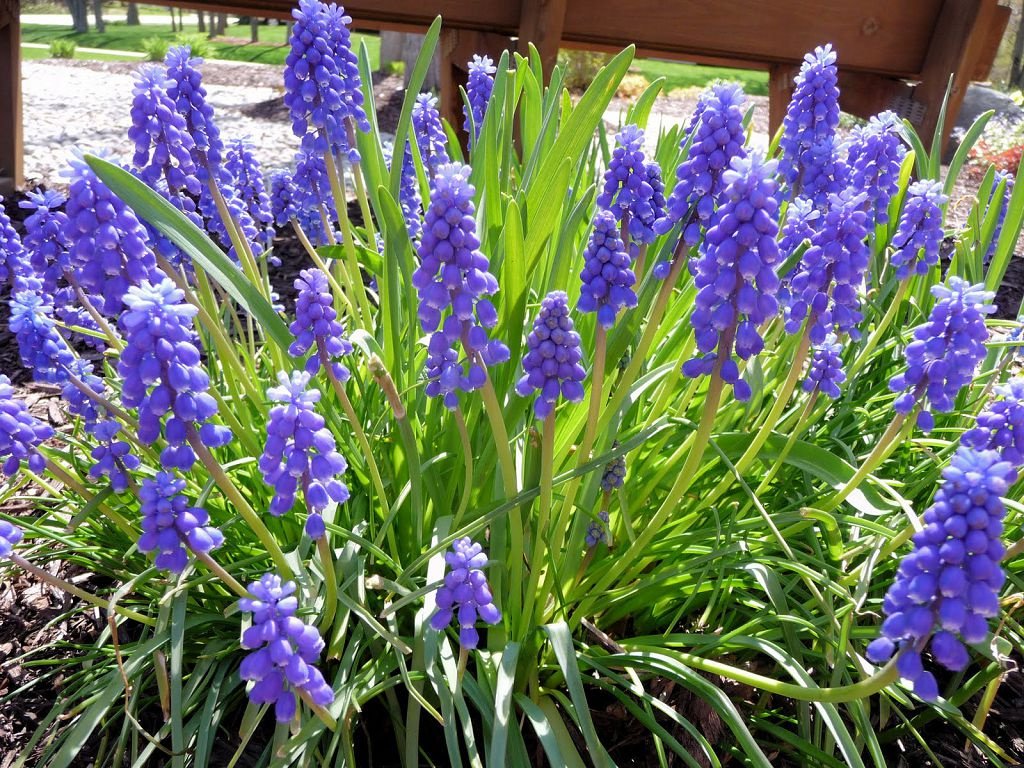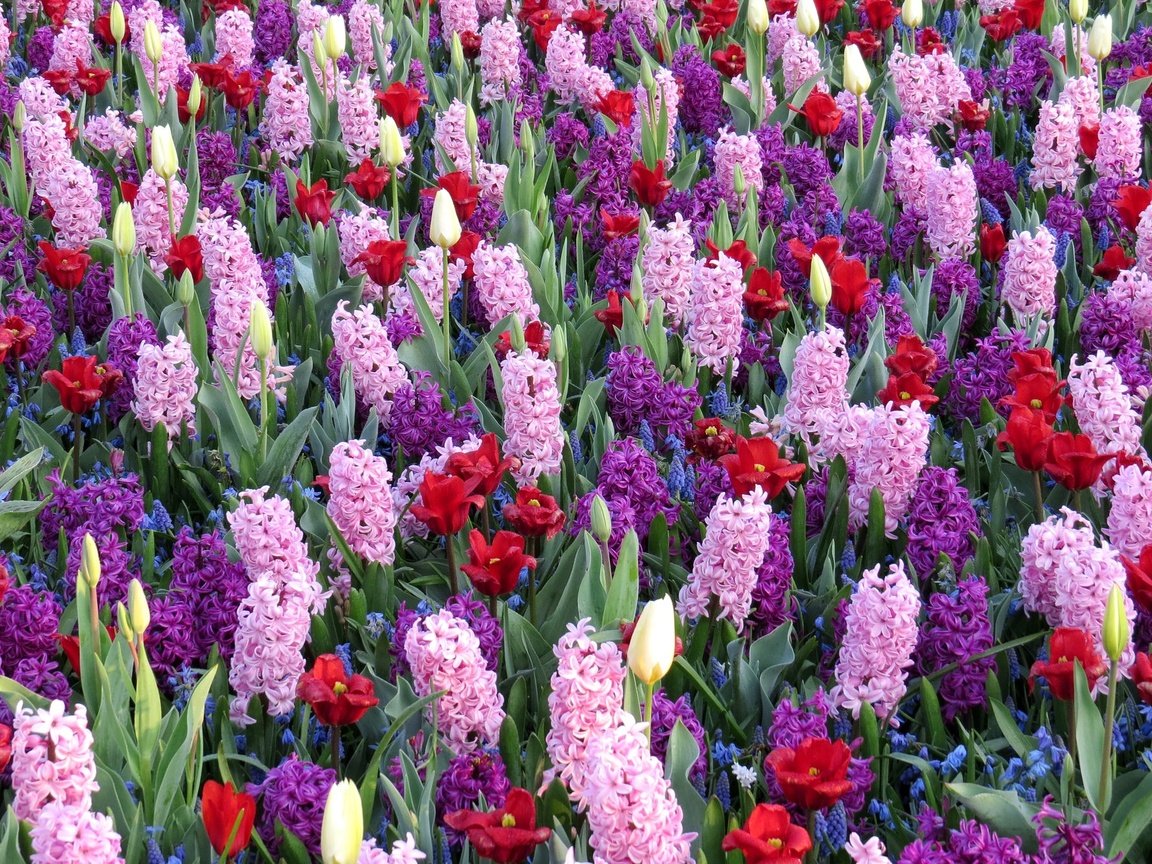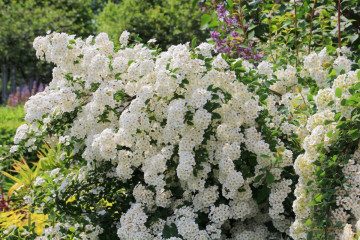Muscari flowers - varieties and types, cultivation
Content:
A flower like muscari is often called "mouse hyacinth". The genus of the plant includes about 60 species of perennial bulbous flowers, the height of which does not exceed 30 cm. Almost all of these species are decorative and are grown in gardens not only in our country, but also in the territory of the former USSR.
Muscari characteristics: varieties and varieties
The asparagus family includes such a bulbous perennial as muscari plumosum. In the wild, the flower grows on mountain slopes, on forest edges in Central and Southern Europe, as well as in the Caucasus. The inflorescences have a strong and aromatic scent. These small bright flowers often decorate lawns, they are used in landscape design as border plants.
Muscari bulbs are oval in shape and have light-colored scales. The diameter is about 2 cm, and its length is 3.5 cm. Olin specimen of the plant has about 6 linear leaves, the length of which is 17 cm. Leaves begin to grow in spring, while in autumn they often reappear. Height 30 cm. Flowers of various shapes are formed on the peduncle, which consist of 6 petals bent to the edge. The shade of these flowers can vary from white to dark blue.
After flowering, seed pods are formed on the plant. After harvesting, the seed can sprout for another year. The advantages of muscari are unpretentiousness in cultivation and high decorativeness of any of the species.
Among gardeners of our country, muscari of the armeniacum variety (Armenian muscari), which has high frost resistance, is considered especially popular. The flowering of the plant begins in late spring and lasts 20 days. It is this species that is usually called "mouse hyacinth". At the top, the flowers are painted in a light blue shade, the lower flowers are deep blue with a white border. This species exudes a wonderful aroma.
Among the most popular descriptions of varieties of this type of muscari, it is worth noting:
- Terry Blue Spike. It has especially high decorative qualities, thanks to 170 flowers that are part of the inflorescence. The plant is unpretentious and grows well in any conditions.
- Fantasy Creation. The spectacular plant has an interesting combination of blue and greenish-blue hues.
- Christmas Pearl. The flowers of this variety are quite beautiful, painted in purple.
Other popular varieties include Azureum muscari, Valerie Finnis muscari, latifolium, plumosum, surprise, pink, sunrise, armenicum.
Planting a plant
Before you start planting muscari, you need to choose the best site. The advantage of the plant is that it blooms when other plants do not even have blossoming foliage yet. For this reason, it is not necessary for a muscari to choose a place with good lighting, because he will have enough light even near trees.
The acid content should be kept to a minimum, otherwise liming should be used. Muscari clay soil is not suitable. Bulb growth is largely accelerated in fertile soil, flavored with humus or compost. In addition, the resulting flowers will be bright and large.If you carry out regular feeding, muscari can grow in one place for at least a decade without a transplant.
Seed planting
If you plan to plant a plant using seeds, then the material is sown immediately after it has been harvested. It should be understood that reproduction in this way is not suitable for every variety. The resulting plants will not carry varietal characteristics. Within a year, seed germination will be significantly reduced.
Seed material is sown directly into open ground. The depth of the hole for planting should be no more than 2 cm. In winter, the planting will be stratified in natural conditions, and in the spring the first shoots will appear. Within a few months, a bulb will form and greens will grow. Flowering can only be expected in the second or third year of planting.
Planting seedlings
Planting muscari with bulbs is the preferred breeding option. When the soil is well prepared, you can start planting. The work should be completed no later than the end of October, before the frost has come. In this case, the bulb will have time to take root well and get stronger.
Before planting, the bulbs are left in a room with cool air, which does not exceed +9 ℃. In the future, it will be easier for the bulb to adapt to the new place. Immediately before planting, the material should be soaked in a medium-strength manganese solution for an hour. Immediately afterwards, the bulbs can be safely placed in the soil.
Due to the small size of the bulbs, it is better to plant them in a trench, the depth of which will be no more than 8 cm. Experienced gardeners cover the bottom of such a trench with a layer of river sand 2 cm thick.This creates good drainage and protection against many pathogenic bacteria. The distance between plantings should be at least 7 cm. During the planting period, it is important that the earth warms up to +18 ℃.
Watering and loosening the soil
Muscari flower requires constant, but simple enough care. The plant should be watered regularly, the soil should always be moist. Do not allow stagnation of water, otherwise the bulb will quickly rot.
Reproduction methods
In addition to the vegetative variant, this plant is capable of self-seeding propagation. For this reason, there is an uncontrolled proliferation of flowers throughout the area. To prevent this multiplication of flowers, you can remove the peduncles after flowering and leave a few for the seeds to ripen. Ripe seeds are harvested and sown in open ground to a depth of no more than 2 cm. As early as next spring, you can see thin seedlings, which indicate that the bulb has begun to form. Flowering from young plants can be expected no earlier than 2 years of age. It is easy to propagate bushes.
Top dressing and fertilizers
If the soil where the muscarias showy flowers grow is rather scarce, then organic fertilizers should be added to it. When digging in autumn, you can add compost or humus. 5 kg of fertilizer per square meter of soil will suffice. If such fertilizing is carried out annually in the fall, then the plant will be able to calmly develop in the same place for 10 years, instead of 5. But in the end, the flowers will have to be transplanted.
Plant transplant
When to transplant a muscari flower? The work is carried out in the fall during a planned digging. Children are separated from the mother's bulb. Work can only be carried out until mid-October. When you need to transplant a plant, it is easy to understand by the external state of the flower bed. Usually muscari flowers grow in one place for about 5 years, after which a transplant is required. You just need to take out the bulb, divide it into equal parts and plant the plant.
Pests and diseases
Onion yellow dwarf virus, which is characteristic of this plant, often leads to a disease such as mosaic. Muscari is also affected by this disease. On the leaves of the flower, you can see a mosaic of a green hue, the plate becomes narrower, and the plant itself is clearly lagging behind in growth and development. There are also cases when muscari suffers from cucumber mosaic, in which the leaf begins to actively deform, and spots and stripes of a light green color can be seen on its surface.
These viruses are carried by aphids, which constantly attack the plant. If a pathogenic microorganism enters the bulb, then it will no longer be possible to remove it. Such flowers must be removed from the garden and destroyed, otherwise the entire area will become infected.
Flowering period and care during this period
What a muscari looks like after flowering and what to do next, not every beginner knows. Flowering lasts about a month and at this time the plant does not require special care. It will be enough just to loosen the soil after watering, remove weeds and dried flowers, which often spoil the appearance of the entire flower bed. Loosening must be done carefully so as not to harm the fragile bulb. If the gardener noted that the quality of the flowers has become worse than last year, then, most likely, the plant already needs to be transplanted.
Preparing for winter
When the plant has bloomed, it's time to start preparing it for the winter. All flower stalks are cut off from the flower bed, and phosphorus-potassium fertilizers are applied to the soil. Watering at this time is reduced as much as possible. When all the foliage dries up, the moisture is stopped altogether. In the fall, the site must be dug up, and the five-year-old plants must be planted and, if necessary, cut off. Those bushes that will not be transplanted should be carefully examined and old leaves removed from them. The transplanted or transplanted muscari or mouse hyacinth is sprinkled with a layer of mulch.
Storing the bulbs
When to dig up a muscari plant for the winter? It is not necessary to dig up the bulbs of the plant.
In order for the material for subsequent planting to still be preserved, you need to know several important rules:
- you need to dig out the bulb after the leaves of the flower begin to dry out;
- for several days the bulbs should dry out, after which they are placed in wet sand or peat;
- once a week planting, you need to check and remove rotten or spoiled bulbs;
- the humidity of the air at which the material is stored must be at least 70%, and the temperature around +17 ℃.
Use in landscape design
A flower garden is often created from this beautiful spring plant in the plots. Such a flower bed can be fenced off with white birch branches, decorative pots or wattle. It all depends on the site itself and the gardener's imagination.
Blue muscari are often planted along paths, thereby replacing fences. They are easy to care for. Even after the flowering period, the green stems will leave a beautiful border around the edges of the paths. Many varieties have undergone active cultivation and are now used as indoor plants.
Often, these flowers are planted in a common array under trees, around shrubs, and they are also combined with other flowering plants. Landscape designers recommend using the following design options for a site using muscari:
- A spectacular trio with blue muscari, white tulips and forget-me-nots.
- Plant the plants in different pots or containers and use them in the flower bed.
- Strengthen blue muscari with orange plants.
- Empty spaces in tulip or daffodil rows can be filled with muscari using self-seeding.
Planting and caring for Muscari outdoors is easy. Subject to basic agrotechnical rules, you can achieve lush flowering of the plant in the spring.




















